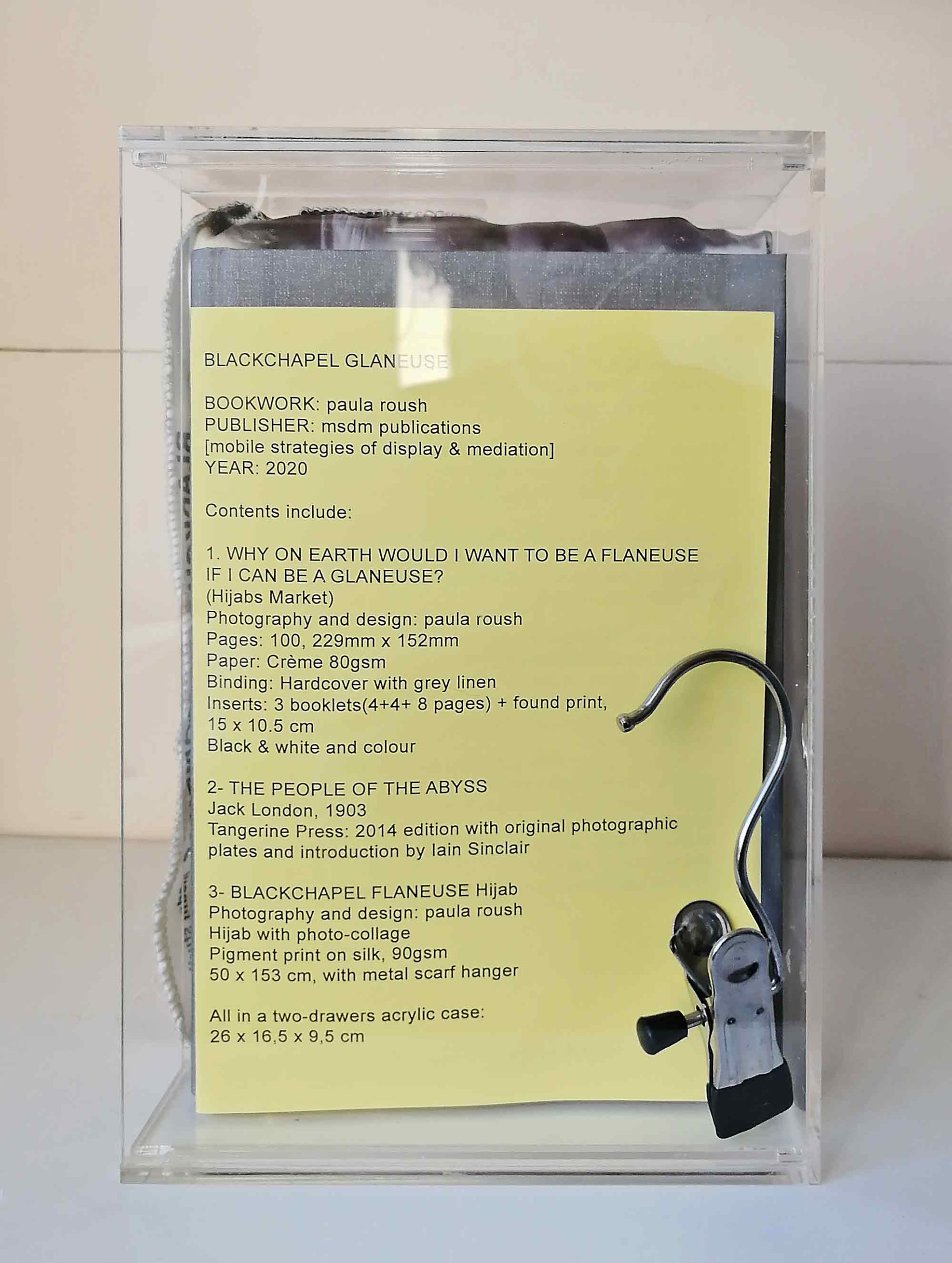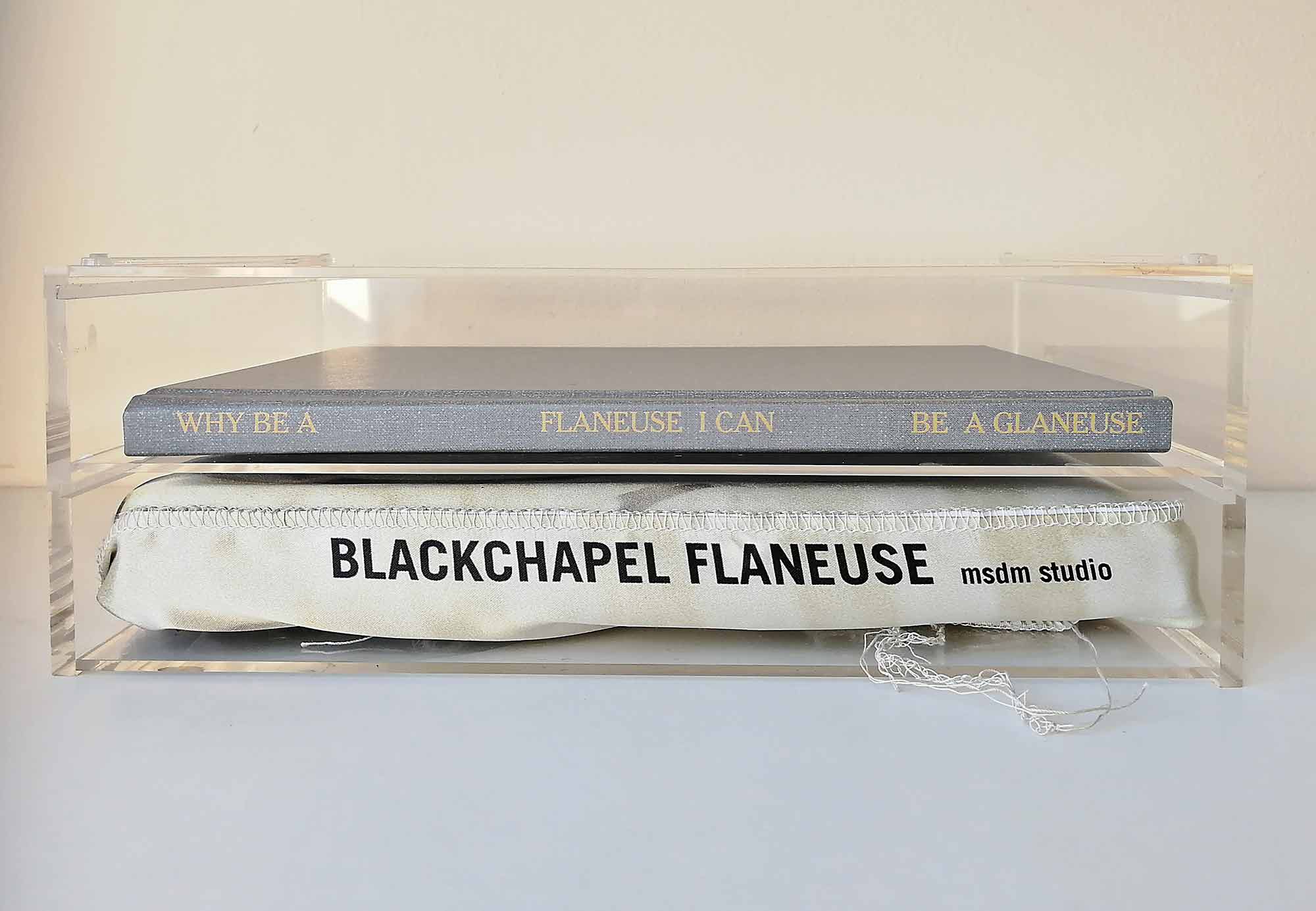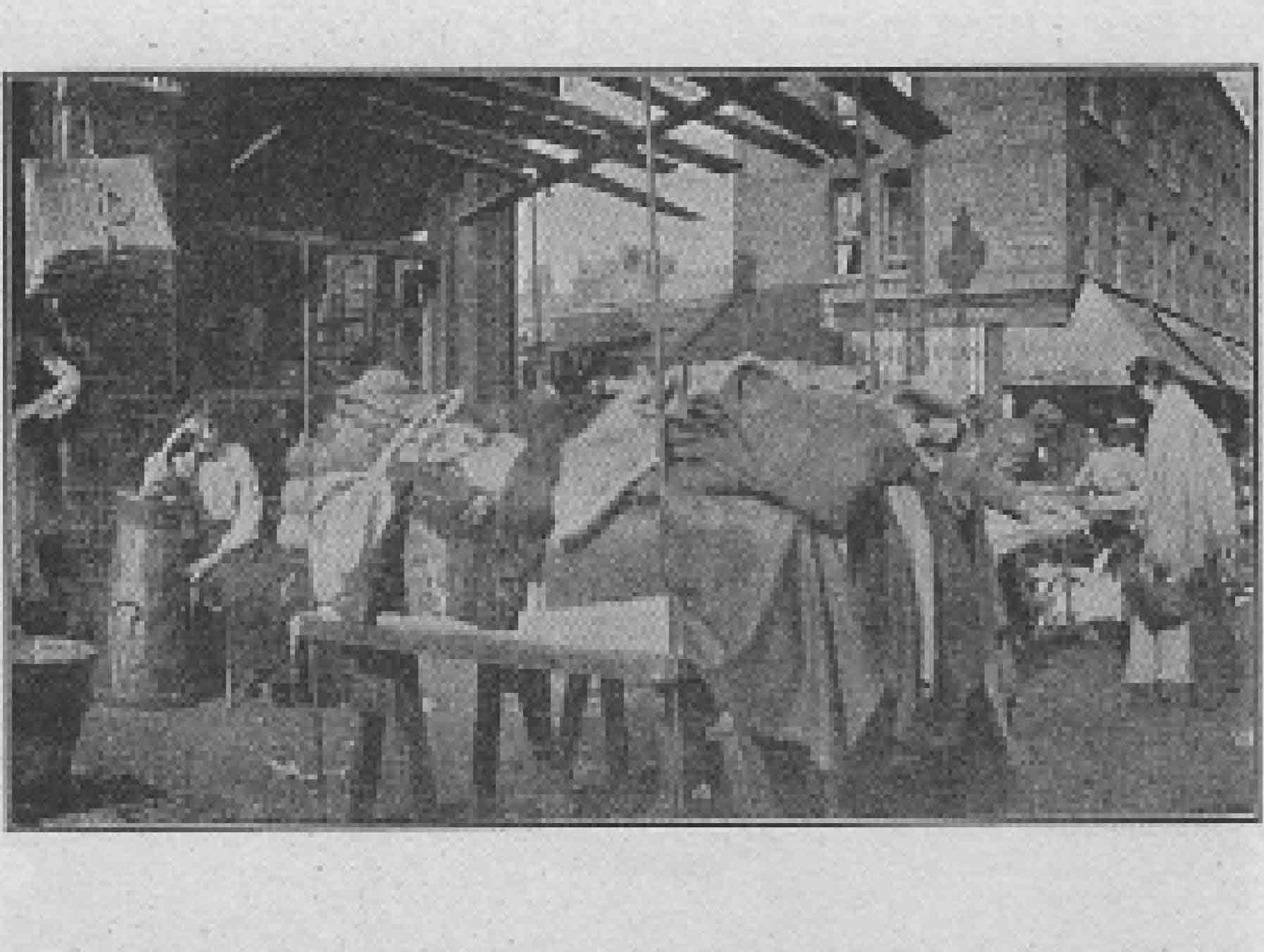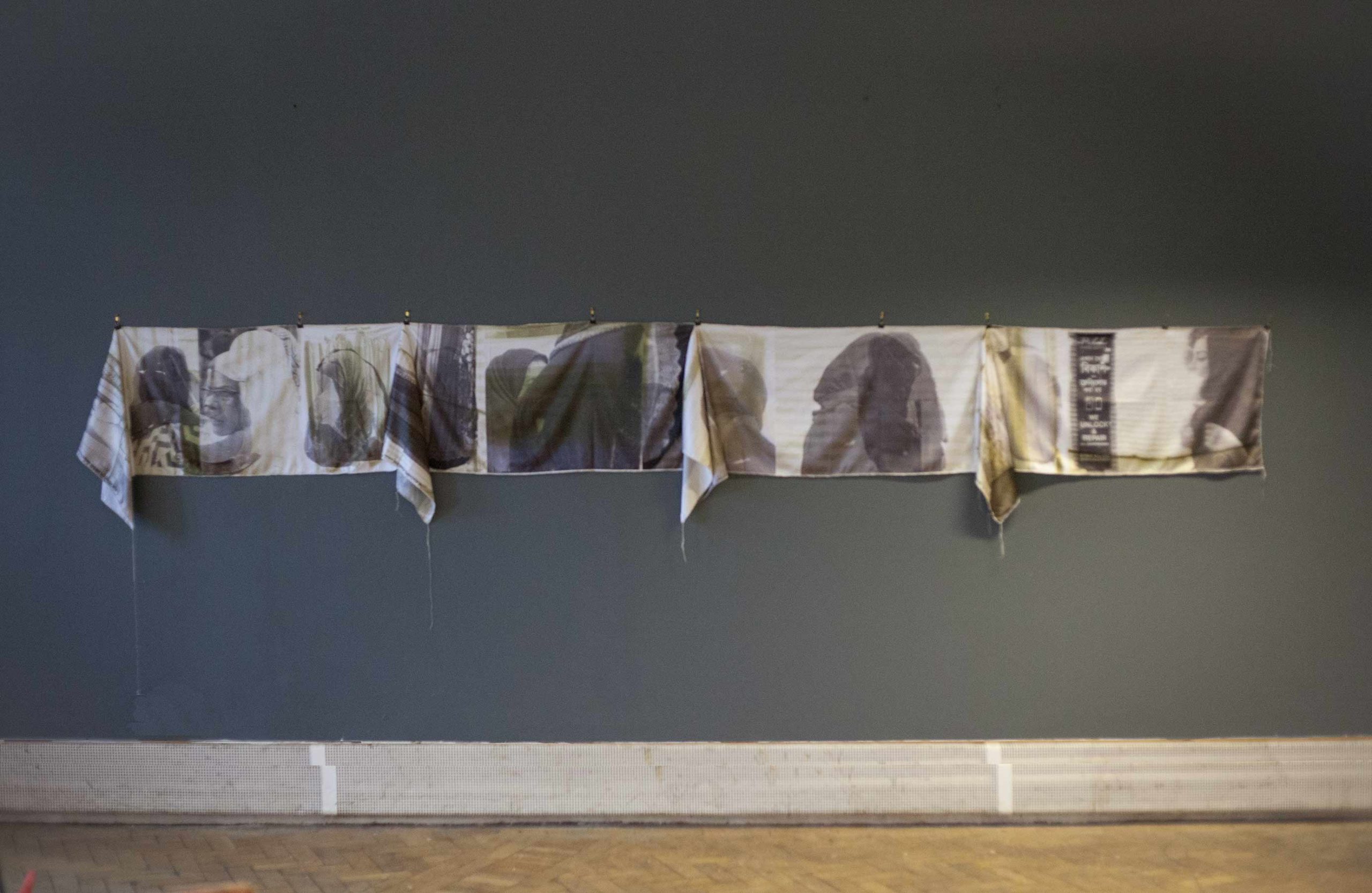
BLACKCHAPEL GLANEUSE
(WHY ON EARTH WOULD I WANT TO BE A FLANEUSE
IF I CAN BE A GLANEUSE?)
BOOKWORK: paula roush
PUBLISHER: msdm publications
[mobile strategies of display & mediation]
YEAR: 2020
Contents include:
1. WHY ON EARTH WOULD I WANT TO BE A FLANEUSE
IF I CAN BE A GLANEUSE?
(Hijabs Market)
Photography and design: paula roush
Pages: 100, 229mm x 152mm
Paper: Crème 80gsm
Binding: Hardcover with grey linen
Inserts: 3 booklets(4+4+ 8 pages)
+ found print, 15 x 10.5 cm
Black & white and colour
2- THE PEOPLE OF THE ABYSS
Jack London, 1903
Tangerine Press: 2014 edition
with original photographic plates
and introduction by Iain Sinclair
3- BLACKCHAPEL FLANEUSE Hijab
Photography and design: paula roush
Hijab with photo-collage
Pigment print on silk
duotone, 90gsm
50 x 153 cm, with metal scarf hanger
All in a two-drawers acrylic case:
26 x 16,5 x 9,5 cm
Exhibition WE STAND TOGETHER
Women’s Photographs of Women 1970s-2020
With: Sarah Ainslie,
Julie Cook
Lucinda Douglas-Menzies
Rachel Ferriman,
Chris Kelly
Daniele Lamarche
Jenny Lewis
Marketa Luskacova
Patricia Niven,
Moyra Peralta
Tamara Rabea Stoll
Hussina Raja
paula roush.
Curated by Sarah Ainslie
Part of Women’s History Month
The Brady Arts Centre
London, March 2-28 2020


This photographic collage inscribes walking and the
collecting of images in a temporal space construction
within Whitechapel’s market when I lived in a nearby
building and would come by in the afternoons,
with my camera, the stalls boasting with women strolling
in the hijabs' market.
I would wonder around, photographing and feeling
this might be what a female flanerie looks like,
women both looking at each other and being looked at,
within the protected veil of the hijab.
Are we the Whitechapel invIsible flauneuses,
I asked myself?
I saw a gendered appropriation of public space,
a playful subversiveness of the dark Whitechapel wound
culture which is still so wrongly attuned to the celebration
of Jack the Ripper’s crimes.
This unique way of sharing the urban realm with my sisters
requires a revision of the term
used for the male urban flaneur,
to take it further than a simple feminisation of the word:
“In the end after all the discussion about women’s access to the practice of flanerie: Why on earth would any woman want to be a flaneur?"
asks Janet Wolff (in Gender and the Haunting of Cities;
or, the Retirement of the Flâneur (2006).
If we understand the city itself as a narrative device
we may begin to entertain other counter-narratives
- to confront the shadows and obscurities,
the dark silences and the ghosts.
Agnes Varda, used the term glaneuse:
‘to glean’ is collect what is left behind after a harvest.
In the film Les Glaneurs et La Glaneuse
(The Gleaners and I, 2001), Agnes looks at
herself as a gleaner:
cinematography (and photography, in my case)
is as much gleaning as picking up a piece of fruit to eat.
Why on earth would I want to be a flaneuse
if I can be a glaneuse?


















